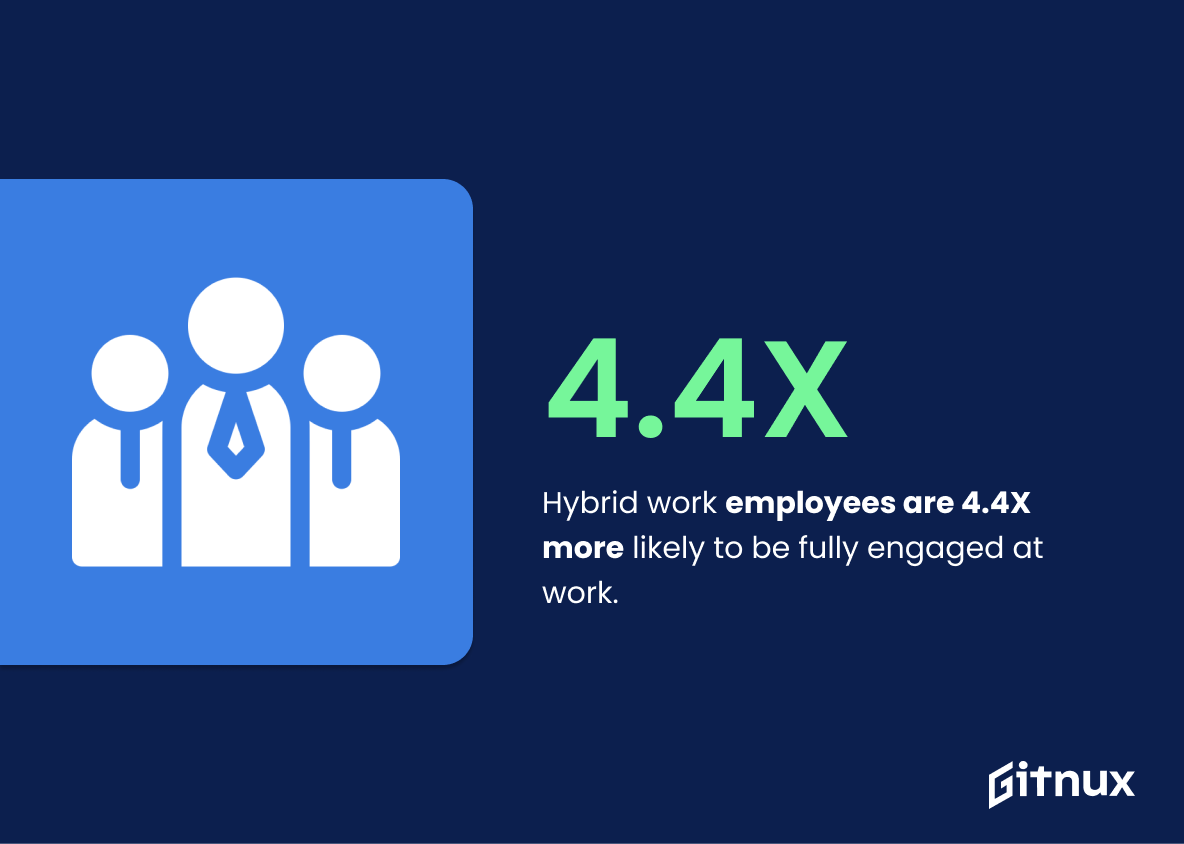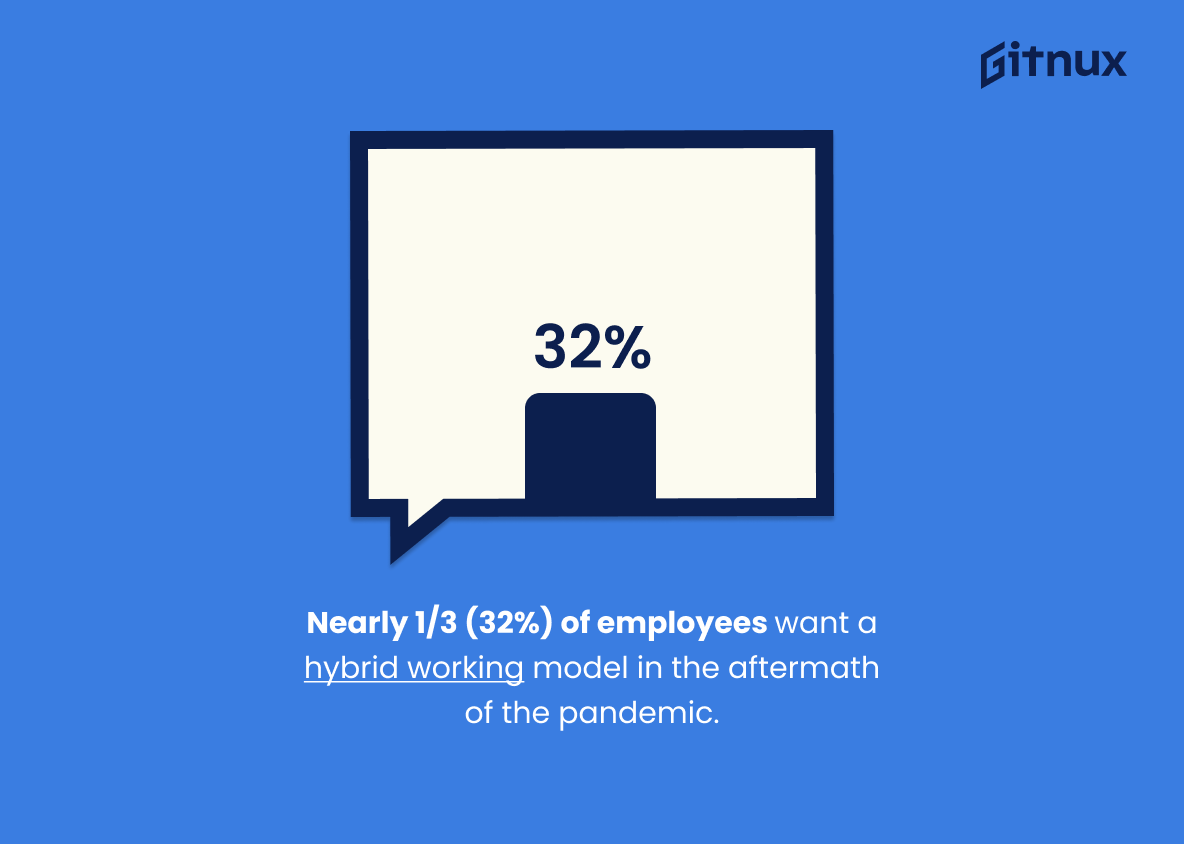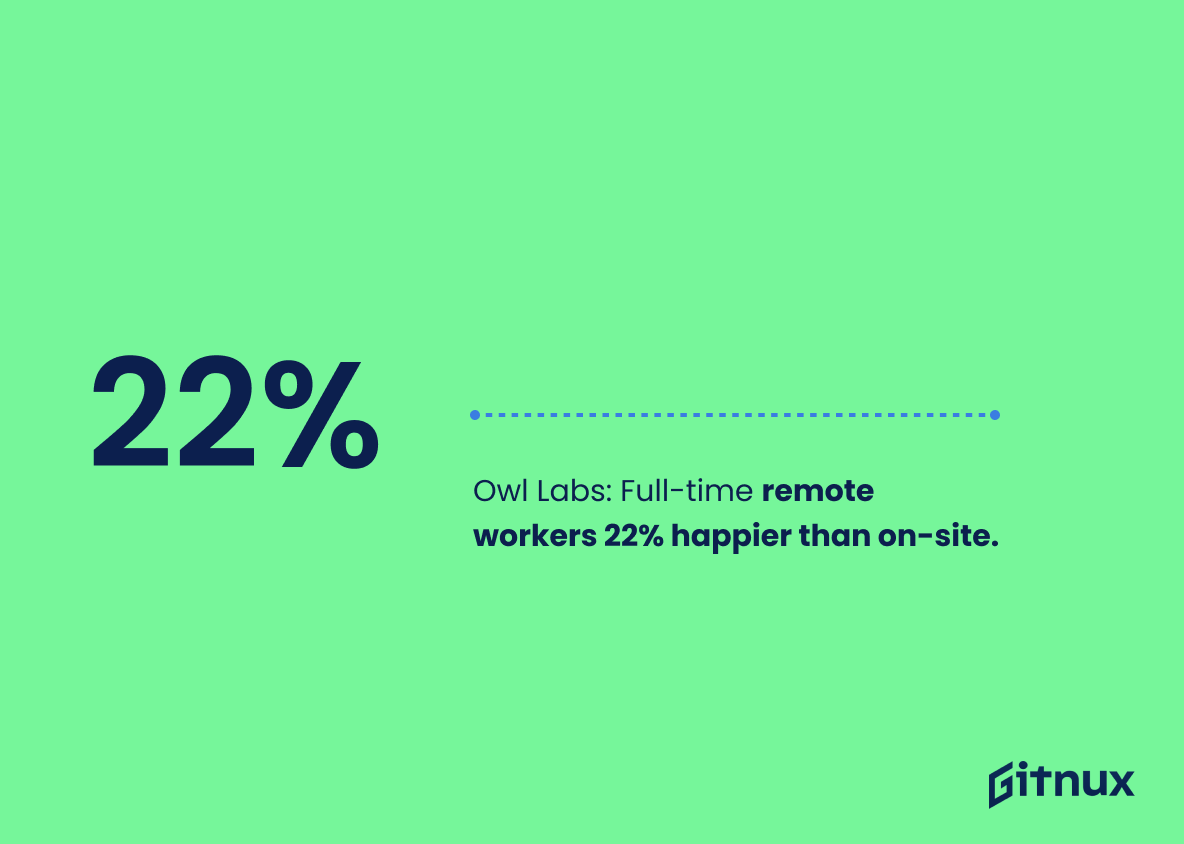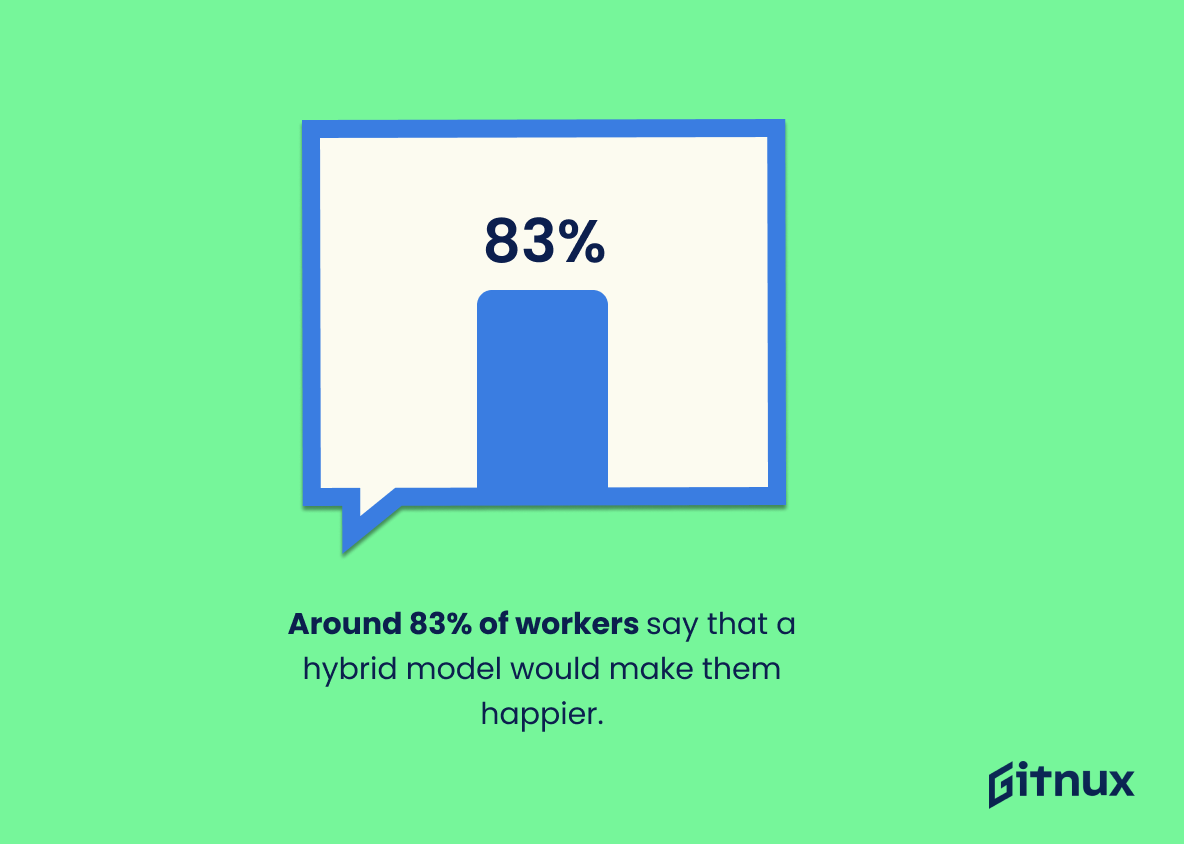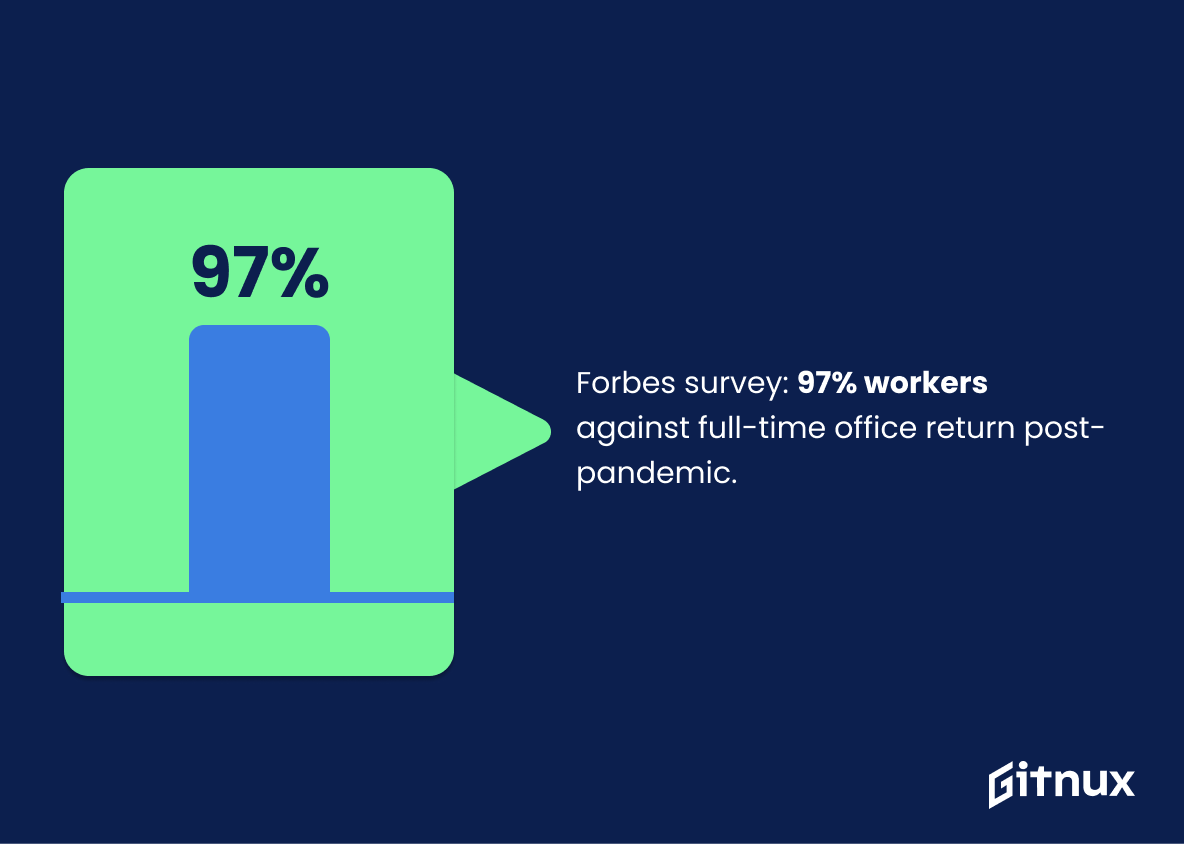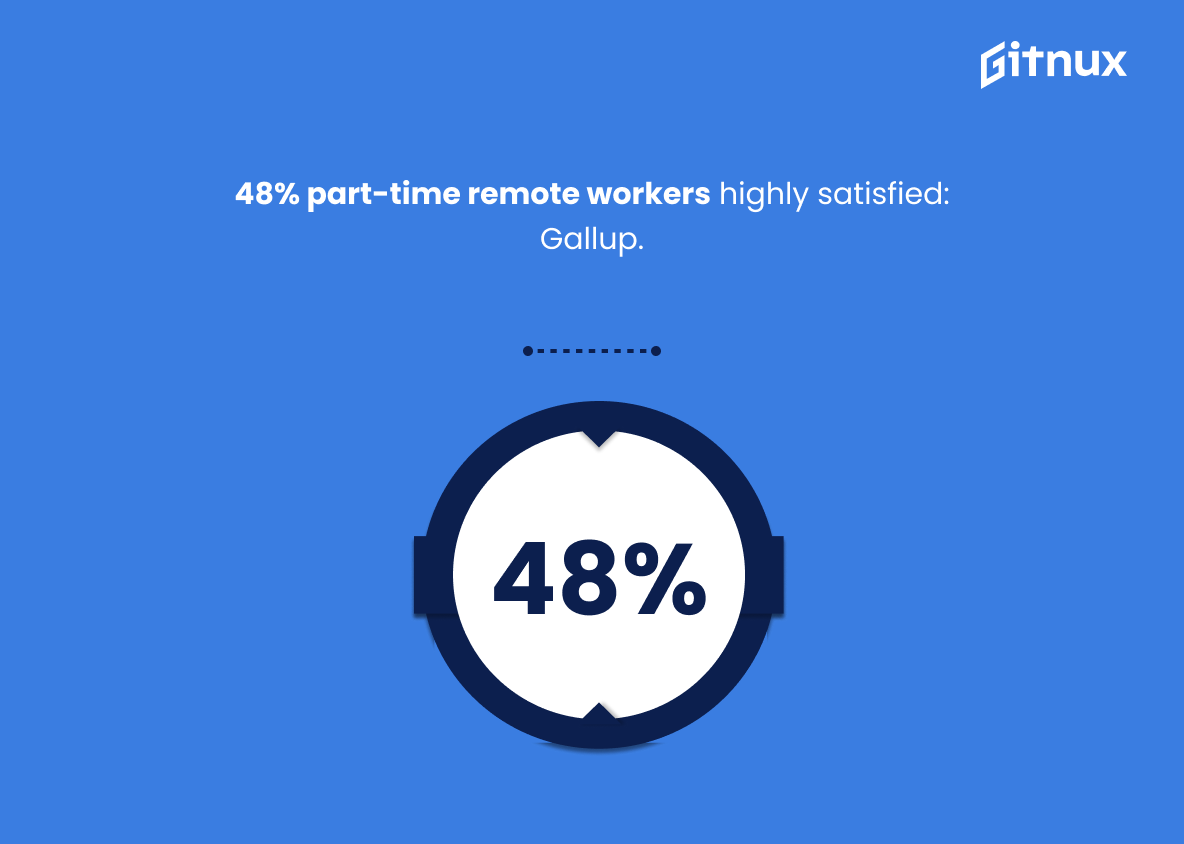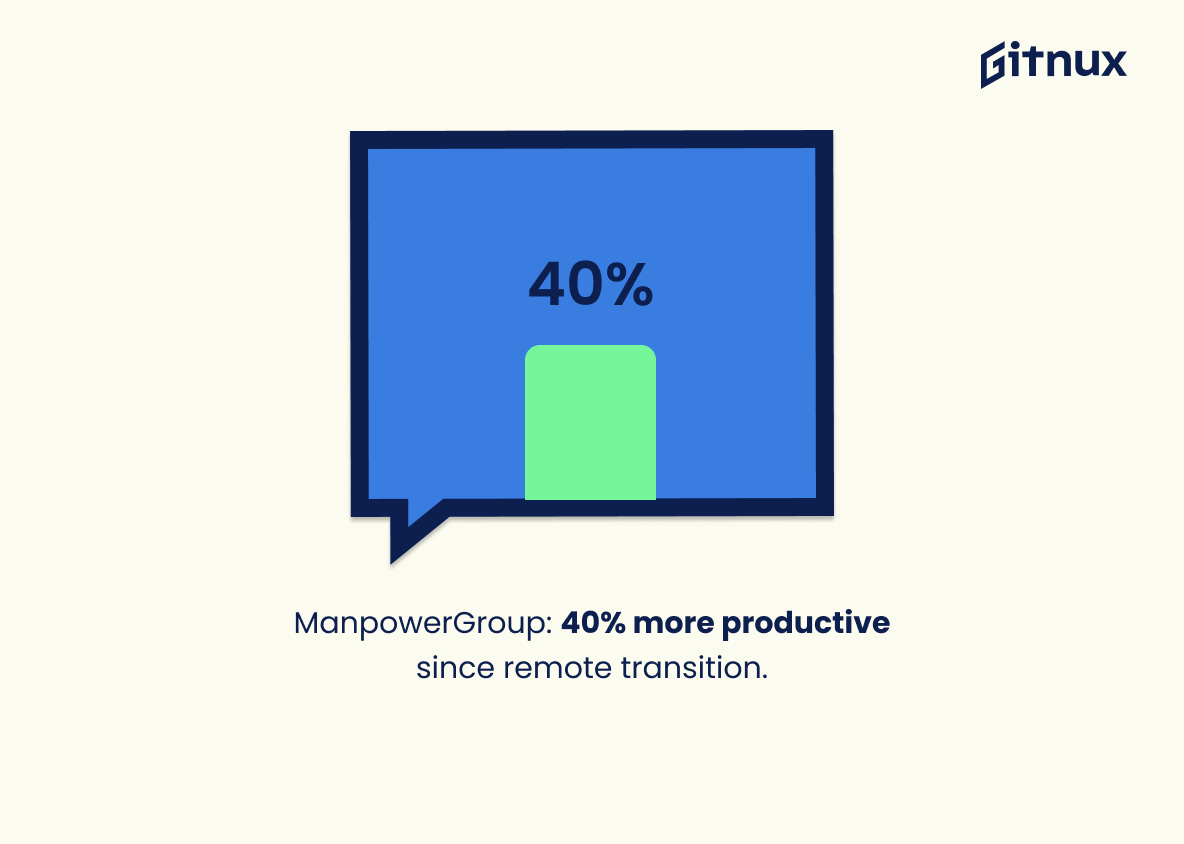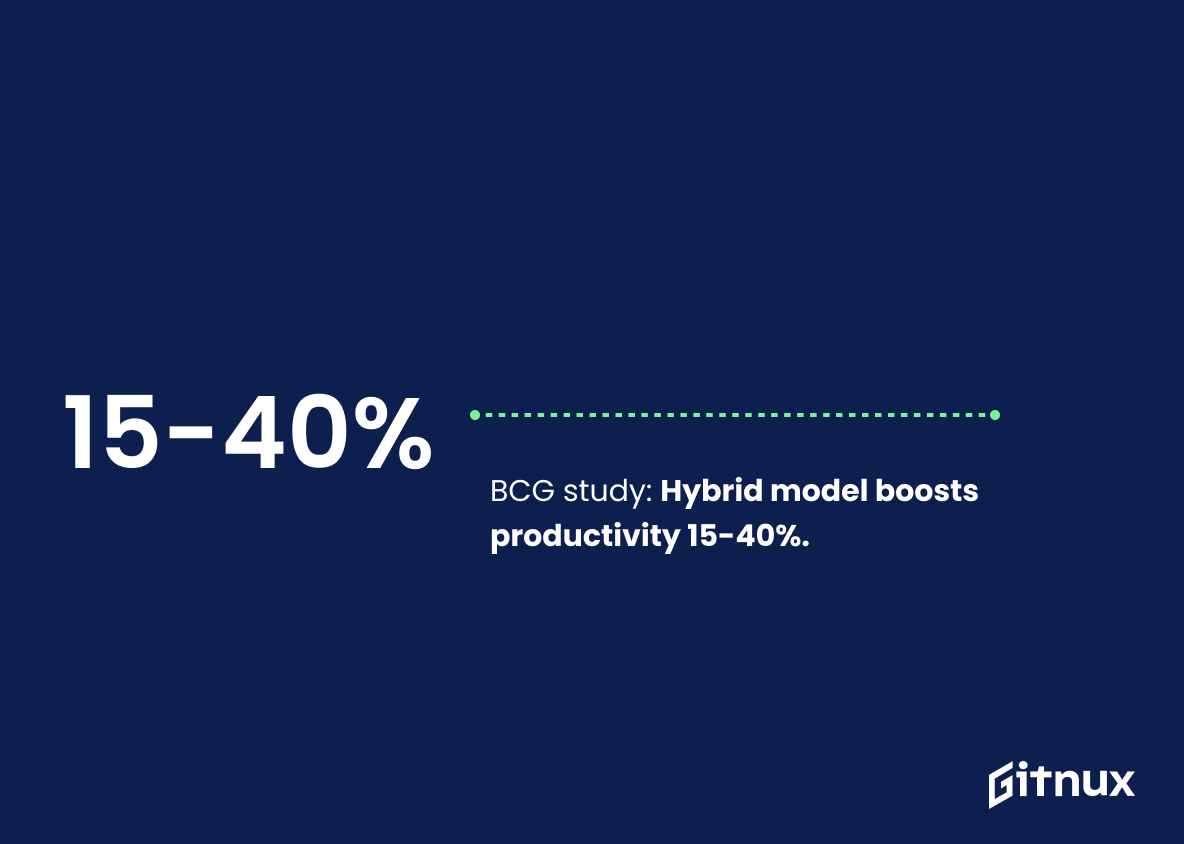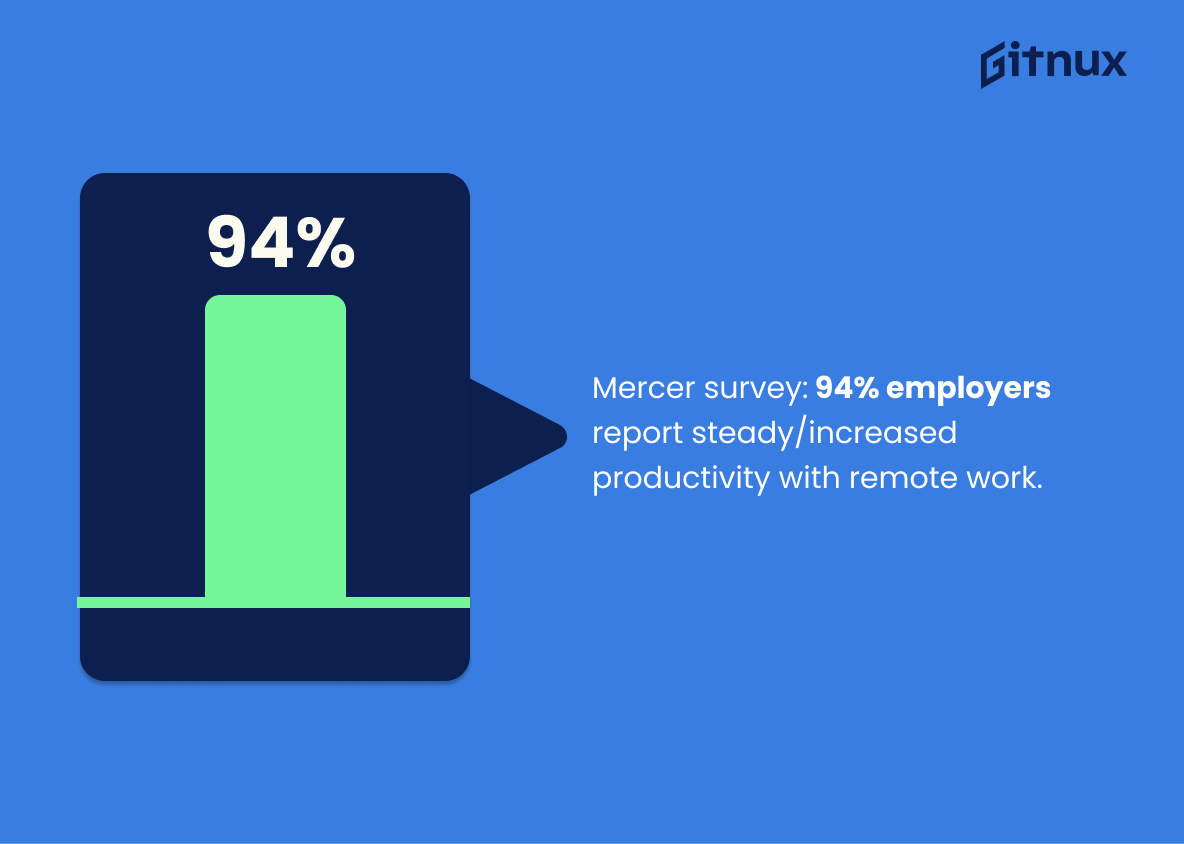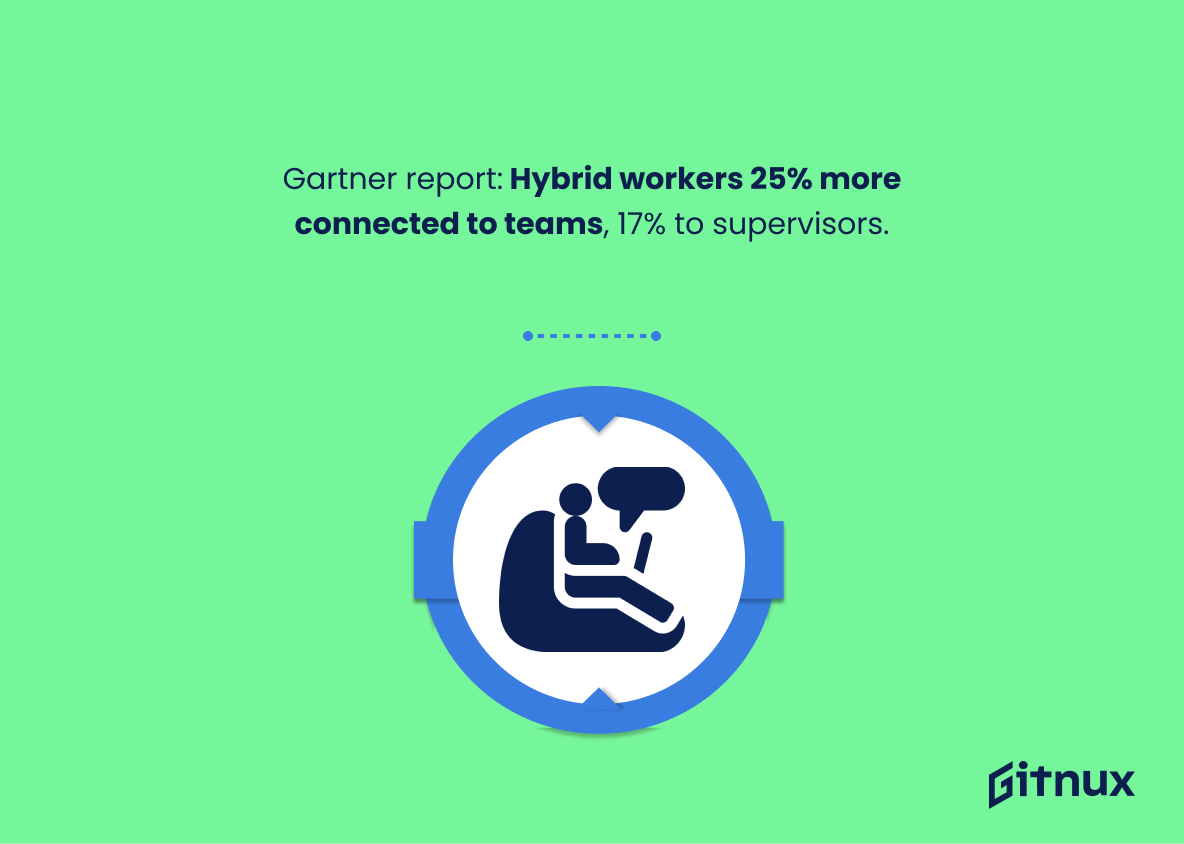The transition from traditional office environments to remote working has fundamentally altered paradigms of productivity. Today, many organizations are exploring the realm of hybrid work, a model that harmoniously blends onsite and remote operations. This constantly evolving landscape can be tough to navigate without the right insights at your fingertips. In our comprehensive article today, we delve into revealing hybrid work productivity statistics. These statistics provide fascinating insights – challenging classic work axioms and illuminating the road ahead for businesses straddling the physical and digital dimensions in their quest for optimum productivity. Buckle up as we journey through the numbers and narratives defining productivity in the hybrid work era.
The Latest Hybrid Work Productivity Statistics Unveiled
Hybrid work employees are 4.4X more likely to be fully engaged at work.
Delving into the crux of hybrid work productivity, an intriguing statistic highlights a compelling narrative – Hybrid work employees are 4.4X more likely to be fully engaged at work. This number articulates a pivotal message – the hybrid workforce isn’t just surviving, it’s thriving.
The compelling percentage underscores an important nuance of hybrid work models – enhanced engagement levels. These augmented engagement levels, in turn, impact productivity substantially, making this statistic a vital player in understanding the appeal and advantages of the hybrid work model. An uptick in engagement signifies that employees, when given the flexibility of a hybrid environment, can yield better focus and commitment to their tasks, contributing to a stronger work output.
Hence, this statistic serves as a powerful anchor in the discussion about hybrid work productivity. It paints a vivid picture of how and why this model could chart the future of productive workspaces. When potential advantages of hybrid work translate into concrete figures – a 4.4X increase in engagement, you know it’s a model worth considering and understanding.
Nearly 1/3 (32%) of employees want a hybrid working model in the aftermath of the pandemic.
In the realm of hybrid work productivity statistics, one insight vaults to the forefront: the revelation that nearly a third, a hefty 32%, of employees yearn for a hybrid working model once the dust of the pandemic settles. This snapshot presents a compelling glimpse of the evolving employee preferences post-pandemic, underscoring the significance of flexible work models in increasing productivity. A hybrid model, standing at the crossroads of in-person and remote work, provides the much-desired balance. It reflects an adaptive workforce emerging from the crucible of the pandemic, keen on weaving productivity with flexibility. The statistic speaks volumes about the importance of such a model in maintaining worker satisfaction and possibly retaining top talent, essential ingredients to fostering a more motivated, and hence, more productive workforce.
A survey by Owl Labs finds that full-time remote workers are 22% happier in their jobs than on-site workers.
The kaleidoscope of Hybrid Work Productivity Statistics gets an interesting twist with the survey conducted by Owl Labs. It unveils a striking comparison, pointing to the increased happiness of full-time remote workers being 22% more than their on-site counterparts. This panorama of contentment can’t be brushed aside, as it plays a pivotal role in shaping the future of the global workforce. The statistic is a testament to the growing influence of remote work on employee morale and satisfaction—a key dimension of productivity not always captured by output metrics alone. This fascinating revelation of profound happiness amongst remote workers could act as a lighthouse for organizations, steering them towards more flexible work models to enhance employee well-being and, by extension, escalate productivity.
Microsoft’s 2021 Work Trend Index reports that 66% of leaders are considering redesigning office spaces for hybrid work environments.
In the realm of Hybrid Work Productivity Statistics, reframing Microsoft’s 2021 Work Trend Index is like navigating with a compass in unfamiliar territory. It signals a transition with 66% of leaders contemplating a shift in traditional office spaces to accommodate hybrid work environments. This glimpse into leadership mindset serves as a beacon, reflecting an alignment with evolving workforce preferences and changing work models. It paints a picture of the future; a recalibration of our work environment that is no longer bound by physical office constraints. Furthermore, this transition could potentially usher in new levels of productivity, as new workflows evolve from this redesign. As such, this statistic isn’t just a number, it’s an essential element illustrating the transformation of work culture in response to our evolving reality.
65% of employees want a hybrid work model post-pandemic, according to a survey by PwC.
Pivotal to our appreciation of the Post-Pandemic Hybrid Work Productivity Statistics is the eye-opening revelation from a recent PwC survey: a compelling 65% of employees are craving a hybrid work model. This strong sweep of interest is the heart of a trending paradigm shift in our work culture, suggesting a marked transition towards the blend of in-office and remote work environments post pandemic. It further validates that most employees don’t want to completely relinquish either the camaraderie of the office, or the flexibility of working from home, but keenly seek a harmonious blend. As such, this insightful statistic heightens the importance of understanding and addressing productivity dynamics in this increasingly popular model, both in the short and long term.
By implementing hybrid work models, companies can reduce their costs by 20%, as per Global Workplace Analytics.
This specific statistic serves as a gold nugget in the discussion of hybrid work productivity statistics, highlighting the win-win nature of such models. Not only does it underpin the potential for substantial cost savings for companies, but it also suggests an economy of resources which could lead to increased organizational efficiency. In essence, it’s the fiscal cherry on top that demonstrates how adaptiveness in work models can lead to flourishing productivity and notable financial savings. This, therefore, piques the interest of corporations to invest in hybrid work models, emphasizing that it’s not merely about adapting to the changing times, but also about thriving amidst them economically.
Around 83% of workers say that a hybrid model would make them happier, according to McKinsey & Company.
Diving into the implications of this statistic embarks us on a fascinating revelation: the happier the workforce, the more productive they can potentially be. The McKinsey & Company statistic evidences that a strikingly large proportion of our global workers – approximately 83%, would relish embracing a hybrid model. This sentiment could directly fuel their happiness quotient, and is pivotally significant if you consider the established correlation between happiness, productivity and ultimately, company success.
Within a blog dissecting hybrid work productivity statistics, this insight is a compelling catalyst for discussions around indirect productivity enhancement. Here, happiness isn’t just an emotional state, but a potential determinant of output and efficiency, underlining the potential competitive advantage gained from a hybrid work model. The statistic could serve as foundational data for urging businesses to revamp traditional workspace norms, value employee satisfaction, and reap the potential rewards of this integrated work methodology.
Nearly three quarters (73%) of knowledge workers prefer a hybrid workplace model, as per a survey by Slack.
Highlighting that a sweeping 73% of knowledge workers favor a hybrid workplace arrangement, as surveyed by Slack, serves as a vital compass in the evolving landscape of work productivity. It underscores a transformative shift in work culture and preferences that echoes loud and clear the appeal and promise of flexibility and balance offered by the hybrid model. In essence, it pinpoints the pulse of contemporary workforce trends, thereby revealing a strong insight for businesses and policymakers to consider when strategizing for higher productivity and employees’ work satisfaction.
A survey by Forbes found that 97% of workers don’t want to return to the office full-time after the pandemic.
In the grand landscape of hybrid work productivity statistics, the aforementioned Forbes survey is a thunderous declaration from the workforce. Indeed, a staggering 97% of workers express a strong reticence at the idea of returning to a traditional full-time office scenario post-pandemic. This signal is a signpost for the direction in which the world of work is moving. Mentioning this fosters discussions around productivity fluctuations, shifting team dynamics and alterations in management style that may occur in a hybrid work model. It underscores the need for companies to reassess their protocols, reinvent their strategies, and re-imagine a future where the office serves as hub rather than the totality of productive workspaces. It highlights the potential in reshuffling the deck of productivity norms to fit a hybrid work model – a model which appears to be no mere stop-gap, but potentially a long-term office-worker strategy peppered with a mix of both remote and in-person workdays.
Almost half (48%) of the employees who worked remote part of the time experienced high job satisfaction, as mentioned by Gallup.
In the realm of hybrid work productivity statistics, the figure pointing to 48% of part-time remote employees reporting high job satisfaction emerges as a capital point, a crucial piece in the puzzle of understanding employee productivity in this era of hybrid work modes. The nugget from Gallup bears testimony to the significant correlation between work mode flexibility and job satisfaction. It underlines the potential of the hybrid model – permitting a balance of remote and in-house work – to enhance productivity. Essentially, happier employees fuel productivity, which in turn, swirls the organization’s success wheel faster. Thereby, it also hints towards a worthwhile area for companies to invest in, substantiating the argument for balanced, hybrid work strategies.
A report by FlexJobs found that 27% of workers say that the ability to work from home is so important to them that they are willing to take a 10-20% pay cut.
In the panoramic context of Hybrid Work Productivity Statistics, the FlexJobs indicator revealing 27% of workers who value the capacity to work from home strongly enough to forfeit 10-20% of their remuneration, stands as a compelling testament to the evolutionary shift in employee priorities. This statistic paints a vivid picture of the intangible advantages employees associate with remote work – including greater autonomy, improved work-life integration and reduced commuting stress.
Moreover, this degree of sacrifice underscores the impact of location flexibility on people’s professional satisfaction, directly influencing their overall productivity. Consequently, this insight has deep ramifications for organizations aiming to capitalize on the full potential of a hybrid work environment. It advocates for a potential realignment of compensation packages to account for the valued benefit of work-from-home flexibility, which could further enhance employee engagement, and ultimately, productivity.
According to a ManpowerGroup report, 40% of people have actually become more productive since the transition to remote work.
Empowering the dialogue on hybrid work productivity, the ManpowerGroup report unravels a compelling narrative that defies the conventional wisdom about in-office productivity being superior. The revelation that two out of every five people have charted an uptick in productivity levels since stepping into the remote work culture adds a robust dimension to the discourse. It challenges the skeptics, endorsing remote or hybrid work as a productivity catalyst for a significant chunk of the workforce, thereby setting the stage for reshaping future work policies. In essence, this statistic serves as a catalyst, illuminating the potential for hybrid work models to stir a productivity revolution.
A study by Boston Consulting Group (BCG) found that companies that incorporated a hybrid model of work saw a significant improvement in productivity with an average of 15-40%.
Peering through the lens of Boston Consulting Group’s study provides compelling reasons for adopting a hybrid work model. The tangible evidence seeps through every crack of modern corporate walls. Not only does it vindicate the hybrid work model, but it also paints a promising picture of notable productivity gains ranging from 15% to a whopping 40%. When transposed onto the canvas of Hybrid Work Productivity Statistics, this study serves as an indelible data point that corroborates the effectiveness of this new-age work model. The statistic thus becomes a cornerstone for businesses keen on reinventing their operational strategies to optimize productivity in an evolving work atmosphere.
A survey by Mercer mentions that 94% of employers reported that productivity remained the same or increased with remote working.
This illuminating statistic shines a light on the growing reality and effectiveness of remote working arrangements, as reported by a significant majority of employers surveyed by Mercer. In the realm of hybrid work productivity statistics, it serves as a compelling mirror reflecting not a decrease, but rather a preservation or surge in productivity linked with remote work conditions. This nugget of data could indeed chisel-away the traditional shackles binding productivity to a conventional physical workspace, enabling a profound exploration of the untapped potential of hybrid work models. With 94% employer validation, it certainly fosters a persuasive argument for the evolution towards more flexible working structures.
A report by Gartner states that hybrid workers are 25% more likely to feel connected to their direct teams and 17% more likely to feel connected to direct supervisors than the traditional workers.
Delving into this compelling statistic underlines the transformative effects hybrid working models have on employee connectivity. The statistic sourced from a Gartner report, indicates an enhanced level of connectedness experienced by hybrid workers, by 25% with their teams and 17% with their supervisors compared to those adopting traditional work models.
These numbers significantly contribute to the narrative on hybrid work productivity. Better connections within the team and with supervisors potentially translate into deeper collaboration, trust, and understanding. By boosting morale, it reinforces team synergy and unlocks productivity potential which is crucial for businesses. Furthermore, feeling connected to supervisors can foster improved communication and guidance, eliminating misunderstandings and consequently enhancing work efficiency.
Therefore, the statistic forms a critical part of the discussion on hybrid work productivity, painting a comprehensive picture of the advantages to encourage more businesses to consider this flexible work model.
Conclusion
In conclusion, the realm of hybrid work is continually evolving, prompting a significant shift in the dynamics of productivity. The hybrid work productivity statistics convincingly demonstrate that flexibility and a tailored work environment can lead to remarkable improvements in employee engagement, individual productivity, and overall business growth. Savoring the best of both worlds, workers in hybrid arrangements are often more effective, well-rounded, and satisfied. As we move forward, companies will need to harness these implications, focusing on innovative strategies and tools that support a robust and effective hybrid workforce.
References
0. – https://www.www.pwc.com
1. – https://www.slack.com
2. – https://www.www.flexjobs.com
3. – https://www.www.forbes.com
4. – https://www.www.bcg.com
5. – https://www.news.microsoft.com
6. – https://www.news.gallup.com
7. – https://www.www.accenture.com
8. – https://www.www.quantumworkplace.com
9. – https://www.www.mercer.com
10. – https://www.www.owllabs.com
11. – https://www.www.gartner.com
12. – https://www.www.manpowergroup.com
13. – https://www.www.mckinsey.com
14. – https://www.globalworkplaceanalytics.com
